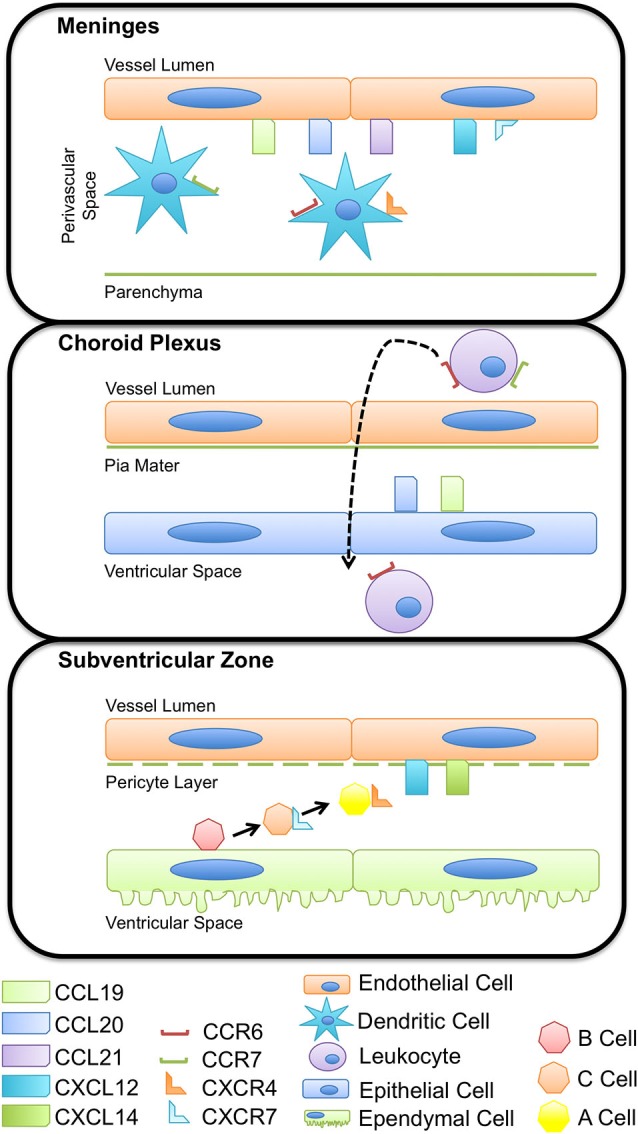Figure 1.

Chemokines regulate immune and progenitor cell homeostasis at multiple CNS barriers. Chemokines expressed by the CNS vasculature have a role in regulating immune cell and neural progenitor cell occupancy within perivascular spaces. Expression of CCL19, CCL20, and CCL21 on meningeal vessels maintain dendritic cell populations important for immunosurveillance within the boarders of the glia limitans, limiting antigen presentation cell access to the CNS parenchyma. The vasculature of the choroid plexus expresses a variety of adhesion molecules and chemokines, including CCL19 and CCL20 that influence immune cell adhesion, rolling, and extravasation across the endothelium and pia mater. CCR6+ and CCR7+ leukocytes enter CSF-containing ventricles and circulate through the CNS, surveying for antigen and other cues indicative of inflammation. Subventricular zone (SVZ) neural precursors receive external cues, namely CXCL12, from the vasculature, that prompts proliferation, differentiation, and migration. Ependymal cells form a thin epithelial-like lining of the ventricular system and enclose the niche in which SVZ progenitors thrive.
